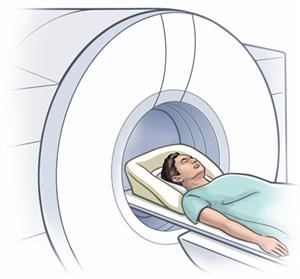What is Ataxia?
- Posted On:

Source: Johns Hopkins Medicine
Ataxia means “without coordination.” People with ataxia lose muscle control in their arms and legs. This may lead to a lack of balance, coordination, and trouble walking. Ataxia may affect the fingers, hands, arms, legs, body, speech, and even eye movements.
The symptom of ataxia can be caused by many things including:
Stroke
Multiple sclerosis
Tumors
Alcoholism
Nerve damage
Metabolic disorders
Vitamin deficiencies
In these cases, treating the condition that caused ataxia may improve it.
While the term ataxia usually describes symptoms, it also describes a group of specific degenerative diseases of the central nervous system called the hereditary and sporadic ataxias:
Hereditary ataxias. This type is caused by a defect in a gene that a person is born with. Hereditary ataxias are degenerative disorders that may progress over a number of years. How severe the disability depends on the type of ataxia, the age of onset of symptoms, and other factors. Certain types of hereditary ataxias start in childhood while others start in the adult years.
Sporadic ataxias. This type usually starts in adulthood and has no known family history.
What causes ataxia?
A defective gene makes abnormal proteins that cause nerve cell degeneration leading to ataxia. As the disease progresses, muscles become less and less responsive to the commands of the brain. This causes balance and coordination to worsen.
What are the symptoms ataxia?
Symptoms and time of onset may vary according to the type of ataxia. Typically, the most common include:
Balance and coordination difficulty (affected first)
Poor coordination of hands, arms, and legs
Slurring of speech
Wide-based gait (manner of walking)
Difficulty with writing and eating
Slow eye movements
The symptoms of ataxia may look like other conditions or medical problems. Always see your healthcare provider for a diagnosis.
How is ataxia diagnosed?
Along with a thorough medical history, family history, and complete neurological and physical exam, these tests may be done:
Lab tests (including blood and urine studies)
Genetic testing. Tests done to determine if a person has certain gene changes (mutations) or chromosome changes which are known to increase risk for certain inherited conditions
Magnetic resonance imaging (MRI). A test that uses large magnets, radiofrequency energy, and a computer to make detailed images of organs and structures in the body

These tests may also be used to rule out other conditions that can cause ataxia. Certain conditions can cause ataxia to develop suddenly, such as head injury, stroke, brain hemorrhage, infections, exposure to certain drugs, and if the heart or breathing is slow or stopped.
Some conditions can cause ataxia to appear gradually, such as hypothyroidism, alcohol abuse, certain vitamin deficiencies, chronic exposure to certain drugs, multiple sclerosis, and other disorders.
How is ataxia treated?
There is no cure for hereditary ataxia. And there is no medicine to treat the specific symptoms of ataxia.
If ataxia is due to a stroke, a low vitamin level, or exposure to a toxic drug or chemical, then treatment is aimed at treating those specific conditions.
The treatment for the lack of coordination or imbalance mostly involves the use of adaptive devices to allow the person to maintain as much independence as possible. These devices may include a cane, crutches, a walker, or a wheelchair. Physical therapy, speech therapy, and medicines to help symptoms, such as tremor, stiffness, depression, spasticity, and sleep disorders may also help.
Campbell County Health Rehabilitation Services and Campbell County Medical Group Neurology are equipped with state-of-the-art diagnostic tools and highly trained specialists to treat a range of neurological disorders, including ataxia. Because ataxia is a neurological disorder that impairs speech, talk to Rehabilitation Services to see if speech therapy is right for you after your initial visit with our neurologist.
Campbell County Health Rehabilitation Services
Speech Therapy
508 Stocktrail Ave.
Gillette, WY 82716
307.688.8000
Campbell County Medical Group Neurology
Main Clinic
501 S. Burma Ave.
Gillette, WY 82716
307.688.6000
For resources and equipment related to ataxia, visit our Home Medical Resources center.
Home Medical Resources
901 W. Second St.
Gillette, WY 82716
